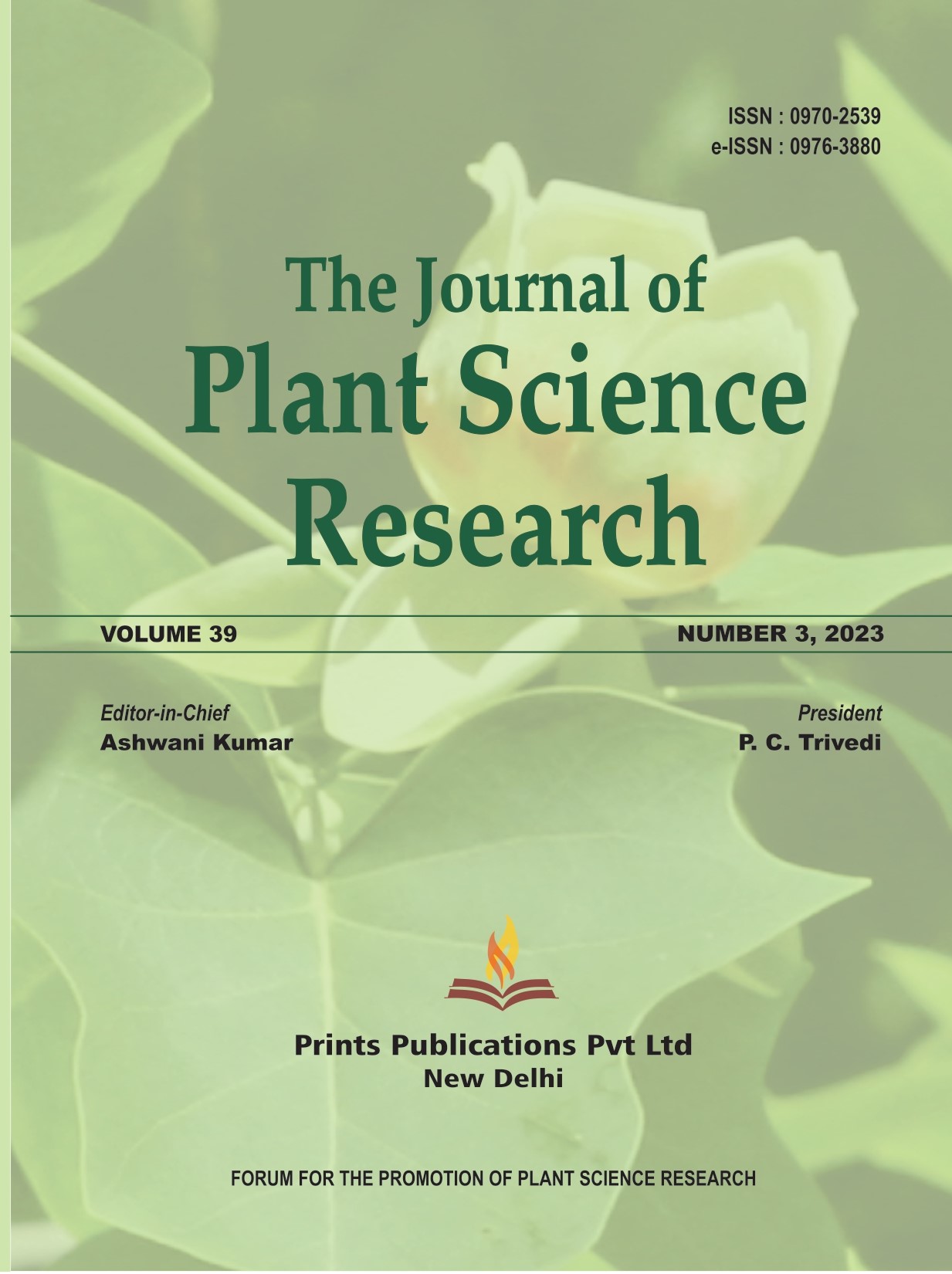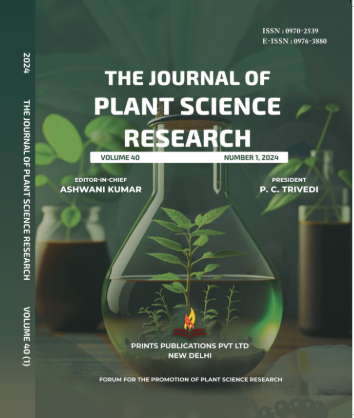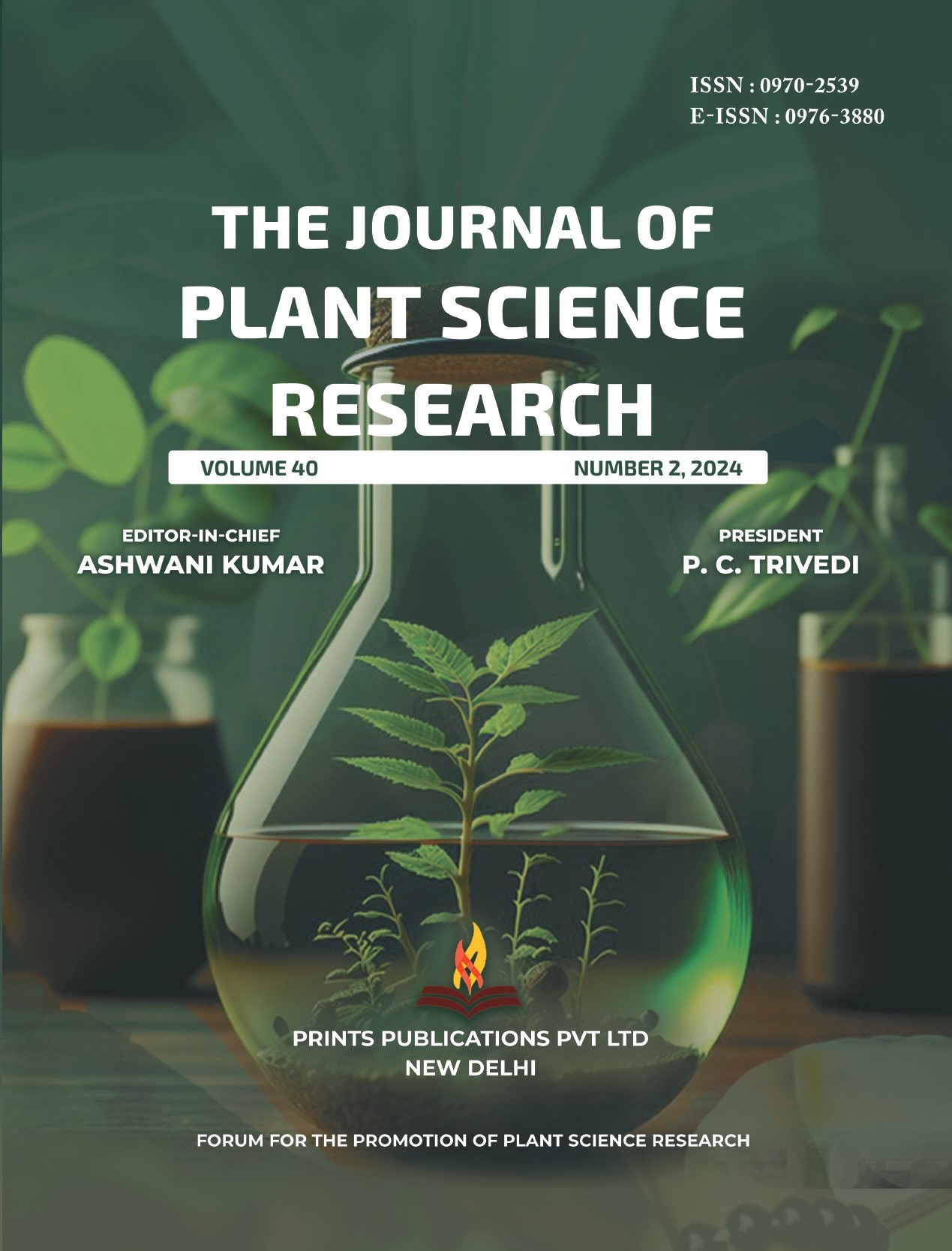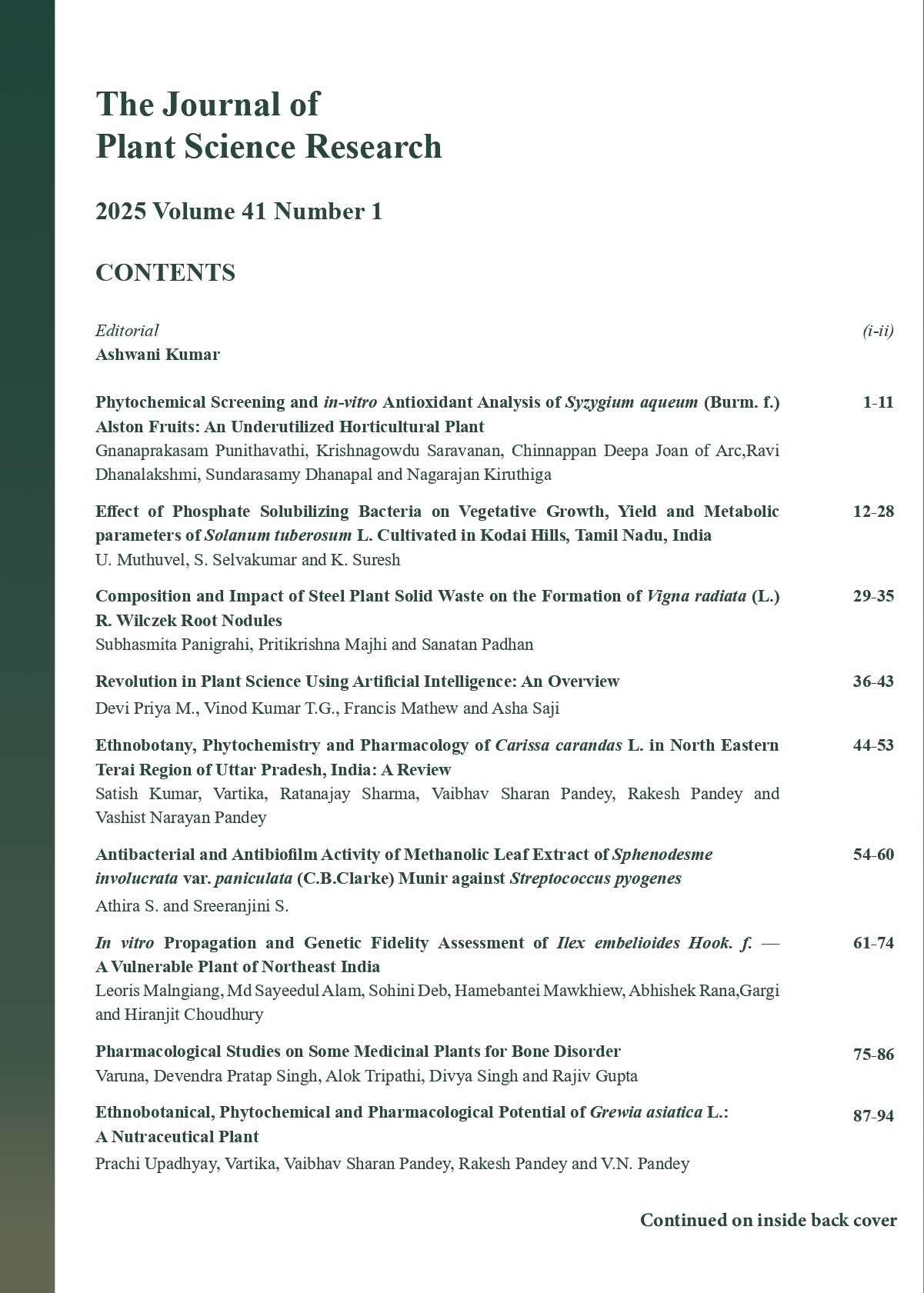The Journal of Plant Science Research - A UGC Care-Listed Journal
Published in Association with Forum For the Promotion of Plant Science Research
Current Volume: 41 (2025 )
ISSN: 0970-2539
e-ISSN: 0976-3880
Periodicity: Tri-annual
Month(s) of Publication: April, August & December
Subject: Botany
DOI: 10.32381/JPSR
Online Access is Free for Life Member
Effect of Biochar on Soybean yield and Soil Properties in Semi-arid Vertisol
By : R.S. Oak, D.D. Sarode, J.B. Joshi, S.A. Chavan
Page No: 367-375
Abstract :
Biochar is a novel soil conditioner with a potential for long term improvement in soil fertility and sustainability of agriculture. However, its effects are dependent on production conditions, feedstock, soil, agro-climate, crop type and application rate. Agronomic potential of biochar is less known in vertisols of hot semi-arid tropics for important oilseed crops like Soybean, especially at practically feasible application rates. Field experiment was performed in a completely randomized block design on a typical vertisol of Satara district, Maharashtra. Effect of biochar produced from mixture of crop residue and wood waste was studied on soybean crop and soil properties. The study involved total eight treatments including control, three application rates of biochar(2, 3.5 and 5 t ha-1) alone, recommended dose of chemical fertilizers (25kg N ha-1and 50 kg P ha-1) (RDF) and combined application of biochar treatments in combination with RDF. Significant adverse effect of biochar was observed on grain yield and soil properties. Highest grain yield was observed with RDF treatment (1.98 t ha-1), which was 40% higher than control. Compared to the RDF, grain yield of sole biochar 2 (1.07 t ha-1), 3.5 (1.3 t ha-1) and 5 t ha-1 (1 t ha-1) recorded a decline of 45.8, 34.5 and 49.7 % respectively. Compared to RDF, RDF plus biochar at 2 (1.6 t ha-1), 3.5 (1.65 t ha-1) and 5 t ha-1 (1.69 t ha-1) recorded a grain yield decline of 19, 16 and 14.3 % respectively. Thus, biochar application upto5 t ha-1 produced negative effect on soybean yield. Soil electrical conductivity and plant tissue phosphorus and magnesium concentration followed the pattern of grain yield. Thus the effect of biochar was mediated by the interaction of biochar with soil nutrients. Further investigation on biochar-nutrient interactions in soil, effect of nutrient rich biochar and of biochars with higher labile carbon are important in context of Indian vertisols.
Authors:
R. S. Oak : Department of General Engineering, Institute of Chemical Technology, Matunga, Mumbai - 400 019, India.
D. D. Sarode : Department of Chemical Engineering, Institute of Chemical Technology, Matunga, Mumbai - 400 019, India.
J. B. Joshi : Homi Bhabha National Institute, Anushaktinagar, Mumbai - 400 094, India
S. A. Chavan : Ex-Head, Department of Agronomy, Dr. Balasaheb Sawant Konkan Krishi Vidyapeeth, Dapoli – 415 712, India
DOI: https://doi.org/10.32381/JPSR.2020.36.1-2.46






